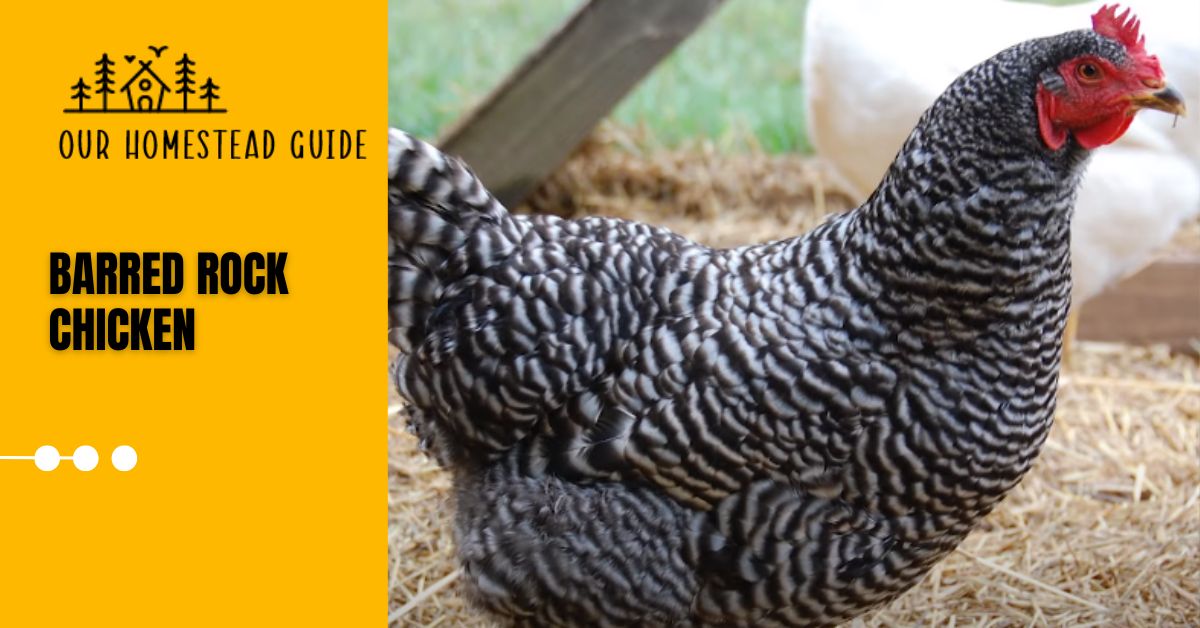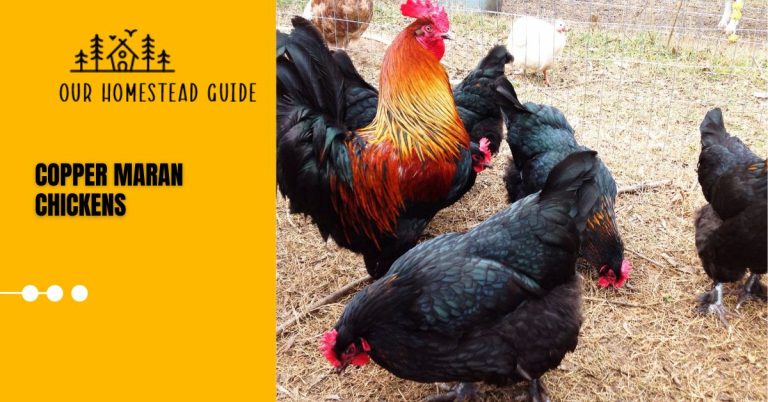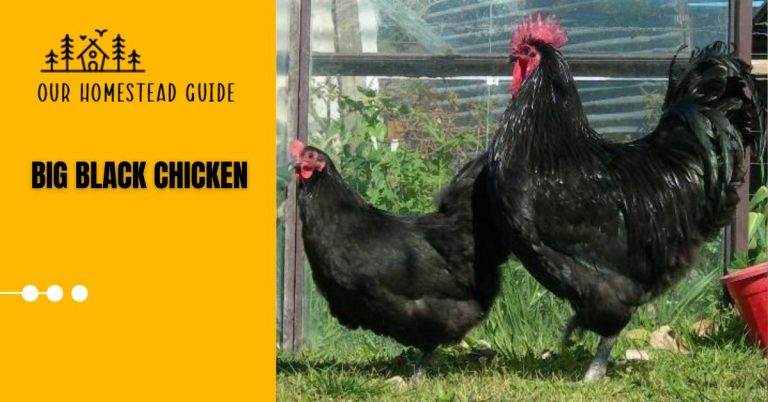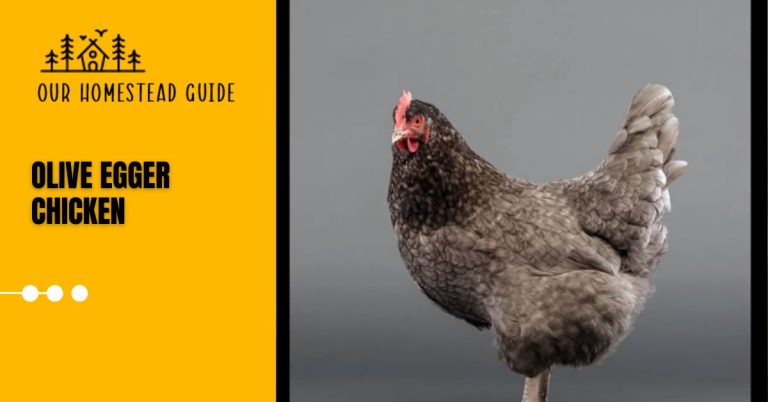Barred Rock Chicken: Nurture, Appearance, And Egg Production,
In addition to being a fantastic egg-laying breed, the Barred Rock Chicken is prized for its exquisite feather pattern. Because they are a color variation of the well-known Plymouth Rock breed, you may hear these birds referred to as Barred Plymouth Rock chickens. Barred rocks: friendly, easy, prolific layers are healthy, and beginner-friendly.
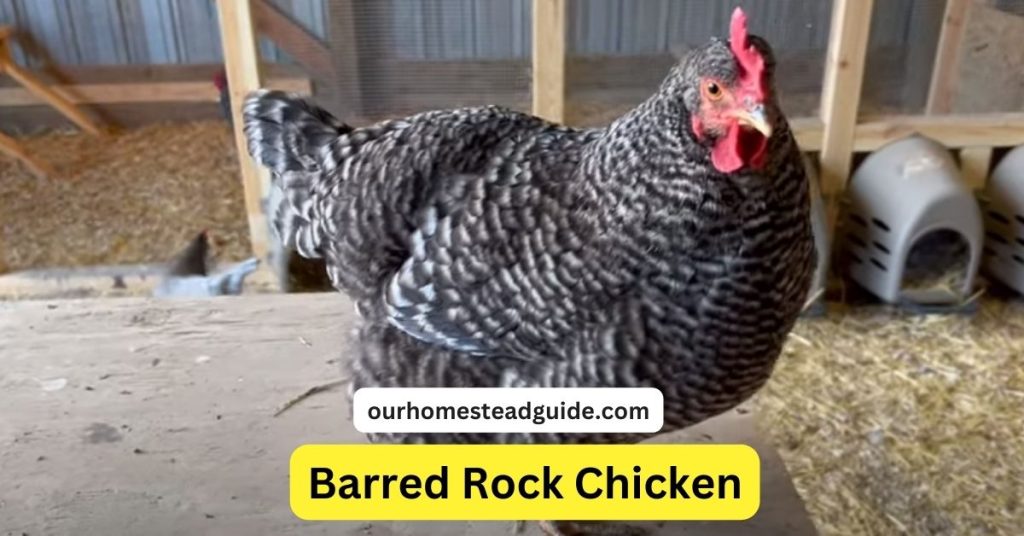
Barred Rock Chicken Nurture
Barred Rock hens need a safe environment, balanced food, and the right beginning feed to be properly cared for. Hygiene and warmth are ensured by frequent washing and plenty of bedding. Keeping an eye on behavior and health permits prompt intervention, and routines promote familiarity.
Calm management lowers tension and fosters trust. Keeping them in social circles encourages camaraderie. All things considered, regular observation, care, and attention are essential to the development and well-being of
Examine and Determine the Chicks:
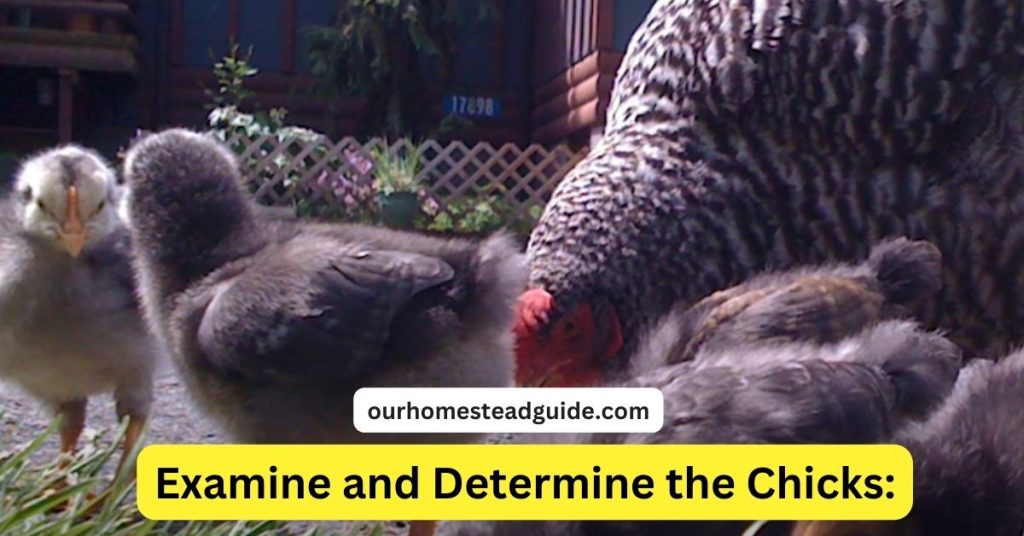
Find the barred rock chicks, paying special attention to the gray one that catches your eye.
Approach Calmly:
To prevent disturbing the chicks, approach them carefully and quietly.
Take Them From Up Front:
Use delicate handling techniques when collecting the chicks.
Raise them from the front of their body so that their body is supported.
They almost instantaneously become calmer while using this technique, and they are less inclined to flap their wings.
Refrain from Reaching for the Feet:
Picking them up by their feet might make them feel unstable and could result in the flapping of the wings.
Be Patient:
Take your time managing the girls.
If you are unable to effectively pick them up the first time, try again without pressuring them.
Reduce Leaping About:
Try to avoid making abrupt movements when handling the chicks since this might cause them to bounce around.
Maintain a Secure Environment:
When working with the chicks, make sure the surroundings are safe and clear of hazards.
When handling them outside, keep an eye out for any open areas where they could try to take off.
See How the Chicks Act:
Keep an eye on each chick’s behavior and note how they respond to being picked up.
Taking Rooster Identification Into Account:
Watch how one of the chicks develops if you think it could be a rooster based on its posture and tail.
Keep the Video Brief for Convenience:
As indicated in your description, take into consideration creating brief movies for documentation and reference.
Observe the Chicks’ Behavior:
Watch what the chicks are doing, especially if you see any attempting to take flight.
Take safety measures to keep chicks from escaping or entering potentially dangerous locations, such as closing doors afterward.
Barred Rock Overview
| Feature | Description |
|---|---|
| Appearance | Medium-sized bird with black and white barring |
| Temperament | Friendly, docile, calm, easygoing, good with children |
| Egg-laying | Approximately 250 brown eggs per year, good winter layers |
| Meat | Moderately good quality, relatively slow to mature |
| Other characteristics | Hardy, adaptable, good foragers, can handle both cold and hot weather, lifespan of 6-8 years |
| Suitability for backyard chicken keepers | Good choice due to ease of care, good egg laying, friendly nature, hardiness, and beauty |
| Considerations | Can be noisy (especially roosters), require spacious coop and run, can be escape artists, susceptible to some health problems |
Are Barred Rock Chickens the Same As Plymouth Rock Chickens?
Indeed, Plymouth Rock Chickens and Barred Rock Chickens are the same breed. The word “Plymouth Rock” refers to a breed of chickens, the most popular and well-known of which is the Barred Plymouth Rock. In addition to their characteristic black and white stripes, Barred Rock Chickens are prized for their durability, amiable nature, and appropriateness for producing both meat and eggs.
Additional Plymouth Rock chicken kinds with distinct coloring include Partridge Plymouth Rock, Buff Plymouth Rock, Silver Penciled Plymouth Rock, White Plymouth Rock, and Blue Plymouth Rock. For this reason, the Barred Plymouth Rock is typically meant when someone mentions Plymouth Rock Chickens without mentioning a specific color type.
Barred Rock Appearance
Barred Rock Appearance: A Striking Beauty in Black and White
The Barred Rock’s distinct appearance is one of its most defining features. Here’s a breakdown of their key physical characteristics:
Overall Body:
- This breed is medium-sized; hens weigh around 7-8 pounds, while roosters weigh about 9-10 pounds.
- a well-proportioned frame with a deep torso, wide chest, and comparatively short legs.
- One comb, vivid crimson in hue.
- Large to medium-sized crimson earlobes and wattles.
- four toes on bare legs.
Feathering:
contrasting stripes of different lengths arranged in a striking black and white barring pattern.
There’s a unique “bar” across every feather.
The perfect barring pattern has obvious, uniform spacing and no color blending or smearing.
Compared to hens, roosters usually have more noticeable barring.
Color Varieties:
Although the traditional black and white barred design is the most popular, there are various color variations as well, such as:
Buff Columbian Partridge Penciled White with Silver
Furthermore, Barred Rocks has:
Usually orange or brown in tone, bright, alert eyes.
a powerful beak that is golden in hue and somewhat bent.
a plump, full tail held erect.
Overall Viewpoint:
The Barred Rock has a regal look because of its eye-catching black and white barring, well-proportioned body, and elegant gait. They are a stunning breed that perfectly combines style and functionality.
Barred Rock History
The formal name of Barred Rock Chickens, or Plymouth Rock Chickens, is a throwback to the mid-1800s in the United States. Born in Massachusetts and officially acknowledged as a breed in 1874, Barred Rocks were well-known for their versatility right away.
To produce a strong and adaptive bird that could be used for both meat and egg production, Dominique and Black Java chickens were crossed in the breeding process. The breed’s characteristic barred black and white plumage became its hallmark.
Early in the 20th century, Barred Rocks were a vital part of American agriculture, acting as a model breed from which other Plymouth Rock variations were developed.
Their popularity among commercial farmers and home poultry keepers alike has been cemented throughout time by their resilience, amiable nature, and reliable egg-laying ability. Because of their lasting appeal in the poultry community, historical significance, and flexibility, Barred Rock Chickens are still highly valued today.
Barred Rock Personality

In addition to their remarkable looks, Barred Rocks are also known for their charming dispositions. What makes them cherished friends and members of the backyard flock are as follows:
Calm and Gentle:
Calm and even-keeled is the hallmark of Barred Rocks. They are perfect for families with kids because they are rarely violent or timid.
They are frequently characterized as inquisitive and amiable like to engage with people and come over for hugs or snacks.
Even inexperienced chicken keepers are simple to handle and maintain due to their placid disposition.
Good with Children:
Because of their reputation for tolerance and patience, barred rocks make wonderful playmates for kids.
Playful interactions are unlikely to scare or ruffle them, and they can even develop into cuddly lap chickens.
Their kind disposition cultivates a feeling of confidence and comprehension, resulting in a beneficial educational encounter for kids who are enthusiastic about taking care of creatures.
Adaptable and Inquisitive:
Barred Rocks love to explore their environment since they are inherently curious. They gladly hunt for plants and insects in their run or yard, demonstrating their exceptional foraging skills.
Additionally, they are tolerant to many temperatures, growing well in both hot and cold regions.
Their curiosity makes it easy for children to pick up new skills and adapt to different environments.
Quirky Side:
Barred Rocks are usually quiet, but when they’re happy or need attention, they may be surprisingly talkative.
They occasionally acquire distinct personalities and peculiarities of their own that make them more endearing to their owners.
According to some fans, their Barred Rocks develop into “lap chickens,” which like being caressed and handled.
Barred Rock Care
Barred Rock Chickens require care that addresses a range of issues related to their health, social, dietary, and housing needs. Here’s a quick rundown:
1. Housing:
For laying eggs, provide a safe, well-ventilated coop with nesting boxes.
Make sure you have enough room; give each bird around two to three square feet.
Provide perching roosts, and if you can, think about including outside access.
2. Nutrition:
Provide a well-rounded diet with layer-appropriate commercial poultry feed.
Ensure that clean, fresh water is always available.
Add grains, leftover kitchen scraps, and infrequent treats to their diet to supplement it.
3. Health Care:

Check for parasites, disease, or other symptoms regularly.
Maintain a clean coop to stop the growth of pests and germs.
If vaccination against common poultry illnesses is advised in your area, do so.
4. Social Environment:
Barred Rocks are gregarious; keep a flock of two or more to avoid isolation.
Keep an eye on flock dynamics to make sure that there isn’t any overaggression.
5. Handling and Interaction:
From an early age, treat them softly to foster trust and lessen tension.
Make routine health examinations, being sure to look at their feet, eyes, and feathers.
6. Protection from Predators:
Put in place precautions against predators, such as fences that are secure and coops that are proofed against them.
Think about offering a safe space where they may roam about during the day.
7. Environmental Considerations:
As the seasons change, adjust the care to ensure enough ventilation in the summer and insulation in the winter.
8. Egg Collection:

To deter egg-eating habits and avoid broodiness, gather eggs regularly.
9. Observations:
Keep a vigilant eye on their behavior to see any early indicators of unhappiness or disease.
Do They Get Along with Other Animals?
Generally speaking, barred rock hens have a calm and kind disposition, which frequently carries over into their interactions with other animals. When Barred Rocks are socialized with other chickens or even domesticated pets, they usually exhibit gregarious behavior. But individual hens might have different personalities; some can be bolder than others, others more reserved.
Barred Rocks frequently get along well in mixed flocks with other breeds, exhibiting a cooperative and non-aggressive personality. Positive interactions between various animals may be facilitated by giving them adequate space and resources as well as by giving them proper introductions.
It’s critical to keep an eye on early exchanges and to be ready to step in if hostility arises. Within the flock, certain Barred Rocks may naturally form a hierarchy, a behavior common in henhouse societies. A habitat where animals live in harmony may be achieved by making sure they have enough food, water, and space.
It’s best to use caution while introducing Barred Rocks to other animals, such as dogs or cats. Animals can get to know one another without experiencing unnecessary stress when they are introduced under supervision. Barred Rock Chickens may live in harmony and harmony with a variety of different animals if they are properly socialized and given the care and attention they require.
Breeding Barred Rock Chickens requires careful breeding stock selection, appropriate housing, and vigilant monitoring. This is a quick reference:
- Breeding Stock Selection:
Select robust, healthy hens that have all the required characteristics, such as the traditional barred plumage.
Seek for birds that meet breed requirements, taking into account the size, shape, and temperament of the body.
Steer clear of breeding birds with known health problems or flaws.
- Nesting and Housing:
Provide a coop with nesting boxes that is safe and cozy.
Make sure there is enough room for the breeding couples and any progeny.
To keep the spaces used for nesting and roosting clean, use fresh bedding.
- Ratio of Breeding:
To avoid overcrowding and stress, keep an appropriate breeding ratio of one rooster for every 8–10 hens.
- Season of Breeding:
Although barred rocks may reproduce all year round, some breeders feel that the best times to do so are in the spring and summer.
Make sure the surroundings are conducive to growing chicks.
- Organic Mating
Permit intermarriage among the sheep to happen naturally.
Keep an eye out for too-aggressive mating behavior.
- If appropriate, artificial insemination:
Artificial insemination can be used in commercial settings to achieve regulated breeding.
- Broody hens or incubation:
To hatch eggs, give them to a broody hen or use an incubator.
Throughout the incubation phase, make sure the eggs are turned and the temperature and humidity are right.
- Taking Care of Girls:
After they hatch, give the chicks a warm, safe place to live.
Give starting chicks a well-balanced diet.
- Variability in Genetics:
If necessary, provide fresh breeding stock to prevent frequent inbreeding and preserve genetic variety.
- Maintaining Records:
Maintain thorough records of breeding couples, hatch times, and any noteworthy characteristics or medical conditions.
- Health Surveillance:
Continually check on the health of the chicks and breeding birds.
To keep your flock robust and healthy, eliminate any members that have hereditary or health problems.
Most Frequently Asked Questions!
1-When and where did they originate?
America is where Barred Rock chickens first appeared in the middle of the 1800s. They were created by the crossbreeding of many breeds, including the Cochin, Dominique, and Java. The idea was to develop a durable, versatile bird that would yield high-quality meat and lay eggs efficiently.
2- What are the different varieties of Barred Rock chickens?
Barred Rock chickens come in a variety of kinds, each distinguished by a distinctive pattern of feathers. With its stripes of black and white, the Barred Rock variation is the most widely found. The Buff Rock, White Rock, Columbian Rock, Partridge Rock, and Silver Penciled Rock are among more variations.
3- What do they look like?
Medium-sized birds with a rectangular body shape are Barred Rock chickens. They have yellow skin, crimson earlobes, and a single comb. Thick and fluffy, their feathers sport a striking black-and-white striped pattern.
4- What are their personalities like?
The amiable and submissive disposition of Barred Rock hens is well recognized. Families with young children might benefit from their easygoing nature and relative calmness. They are also bright, inquisitive birds that like to explore their environment.
5- How many eggs do they lay per year?
Good egg layers, Barred Rock hens lay 200–250 brown eggs a year on average. They are an excellent option for backyard flocks in cooler locations since they make superb winter layers as well.
6- What is the quality of their meat?
Because they are kept for both eggs and meat, Barred Rock hens are a dual-purpose breed. They have soft, delicious, high-quality meat. Their growth rate is slower than that of many other meat breeds, thus they might not be the ideal option for large-scale production.
7- Are they good for backyard chickens?
Backyard flocks are a great place to raise Barred Rock chickens. They are simple to take care of, calm, and gentle. They can adapt to a range of conditions and are also skilled foragers.
8-What size coop do they need?
A coop for barred rock hens must have a minimum of 4 square feet for each chicken. They also require a minimum of 10 square feet per bird for their run.
9- What should they eat?
Feeding options for Barred Rock hens include homemade and commercial feeds. They should always have access to grit and fresh water.

